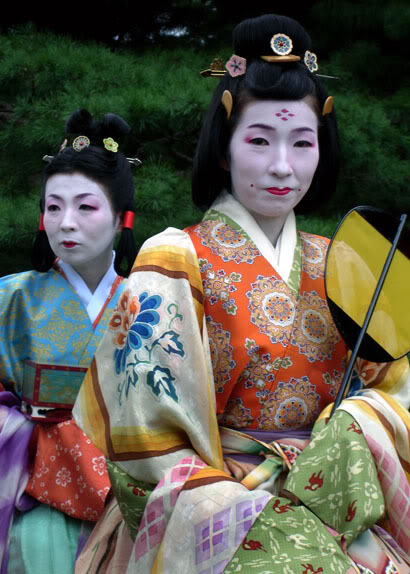
(courtesy mboogiedown)
Jidai Matsuri in Kyoto, Oct 22
Just a reminder that Oct 22 is a big day for Kyoto, with the Jidai Matsuri (Festival of Ages) taking place at noon. (The Kurama Hi Matsuri (Fire Festival) in the evening has been cancelled this year owing to damage from the typhoon to the Eiden railway.)
The Jidai Matsuri was created in Meiji times as a conscious attempt to revive the city’s fortunes in the wake of the move of the emperor and his associates to Tokyo. It’s given the full backing of the city in provision of its lavish costumes etc, and it has a strong imperial bent in keeping with Kyoto being the seat of the emperor for over 1000 years.
The procession begins with present-day officials, then works its way back through history to the days of Heian-kyo in the ninth century. An English language pamphlet is most useful for working out who the colourfully costumed characters represent. The effect is to see a moving tableau of Japanese history pass before one.
***************
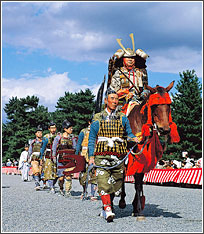
(courtesy ishama.com)
The following is taken from the monthly publication, Kyoto Visitors Guide.
The Jidai Matsuri Festival (Oct. 22)
The rich costume pageant portraying Kyoto’s history
In 1895, Kyoto city held its first Jidai Matsuri Festival: a colorful, exotic costume parade dedicated to the Old Capital’s 1100 year history. The first festival also marked the opening of Heian Shrine, a 2/3 scale model of Kyoto’s original imperial palace. The shrine was specially built to enshrine the spirit of Emperor Kammu (reigning 781-806), who founded Kyoto in 794, and the city’s last reigning emperor and Emperor Komei (reigning 1847-1866). [Actually Komei’s spirit was installed later, during WW2.]
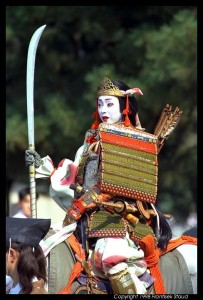
(courtesy Frantisek Stoud)
Today, after nearly 120 years, the Jidai Matsuri Festival continues to be a major focus of pride for Kyoto. For most visitors, the festival’s biggest attraction lies in the fantastic range of authentic historical costumes, covering twelve centuries of Kyoto’s history and social development, worn by the participants.
The festival begins at seven in the morning on the 22nd with the transferal, on sacred palanquins, a covered seat carried on poles on the shoulders of two or four people, of the imperial spirits from Heian Shrine to the Old Imperial Palace.
At around 12:00, the southern central axis of the Old Imperial Palace becomes a massive stage of the ages. The procession departs from here and slowly makes its way through the streets of Kyoto to Heian Shrine.
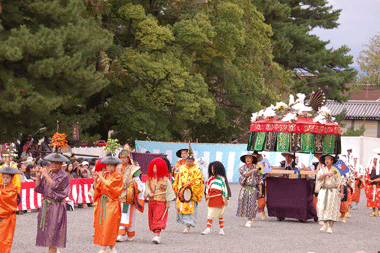
Jidai Matsuri (courtesy Kyoto Visitors Guide)
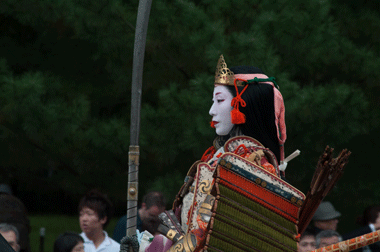
One of the historical characters, Shizuka Gozen, lover of Yoshitsune
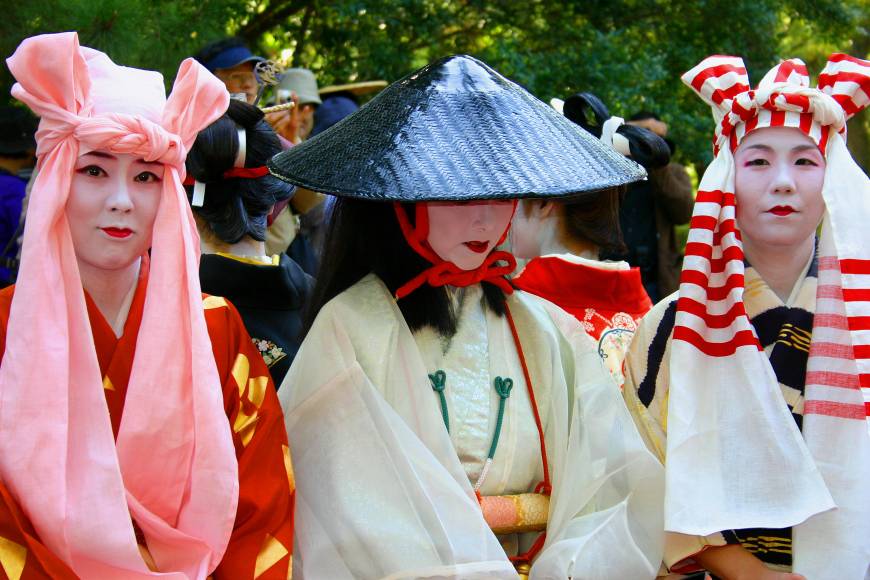 One of the most appealing aspects of the festival is the authenticity of the costumes, which were made of material as close to the original as possible. Even the weaving and dyeing was done in the manner of the age they represent.
One of the most appealing aspects of the festival is the authenticity of the costumes, which were made of material as close to the original as possible. Even the weaving and dyeing was done in the manner of the age they represent.

courtesy Nick Jones
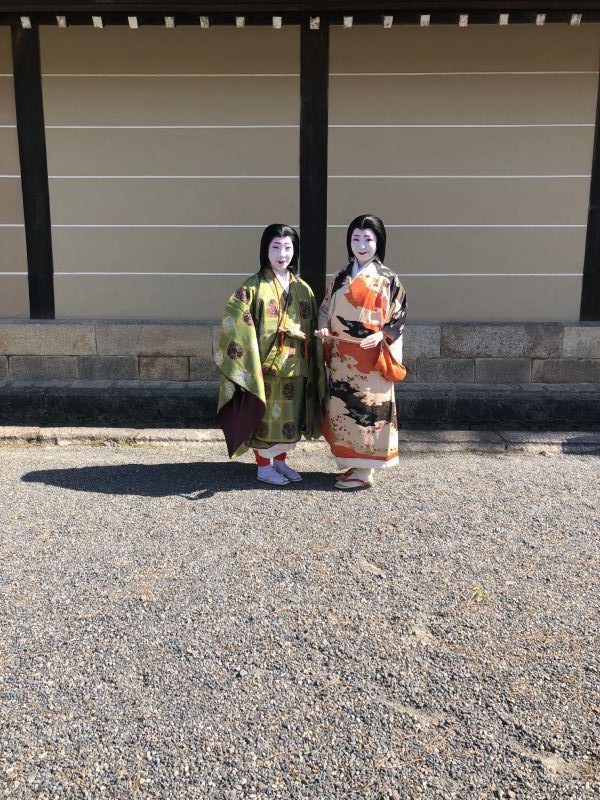
courtesy Nick Jones

courtesy Nick Jones

courtesy Nick Jones

Leave a Reply